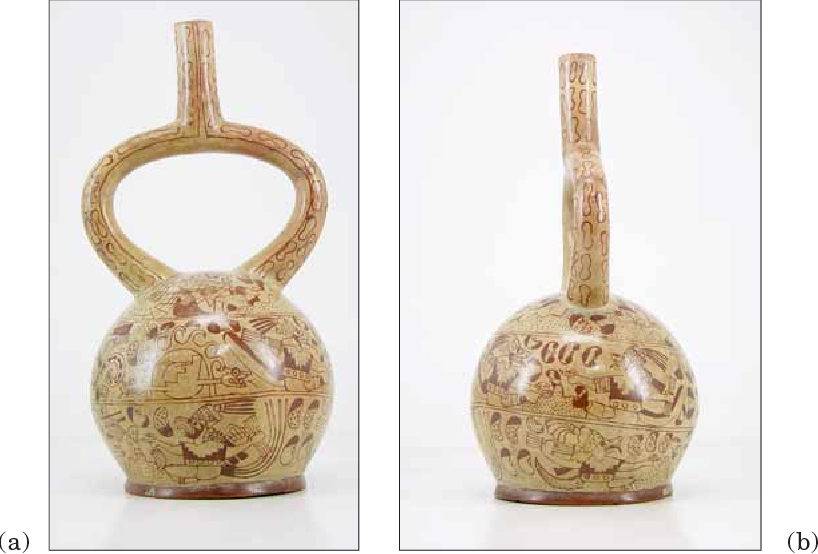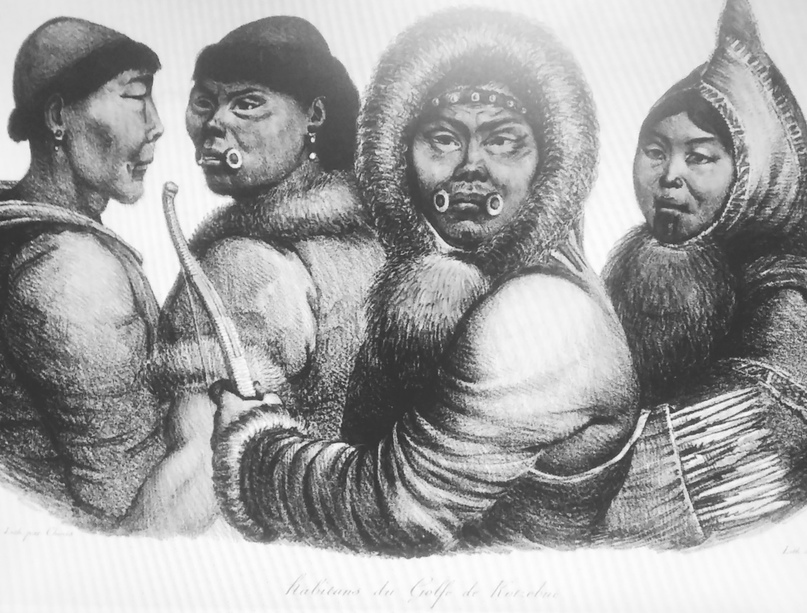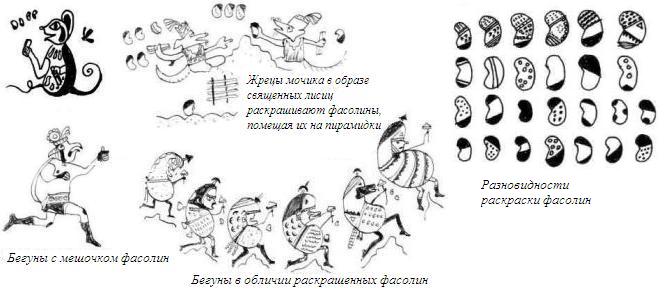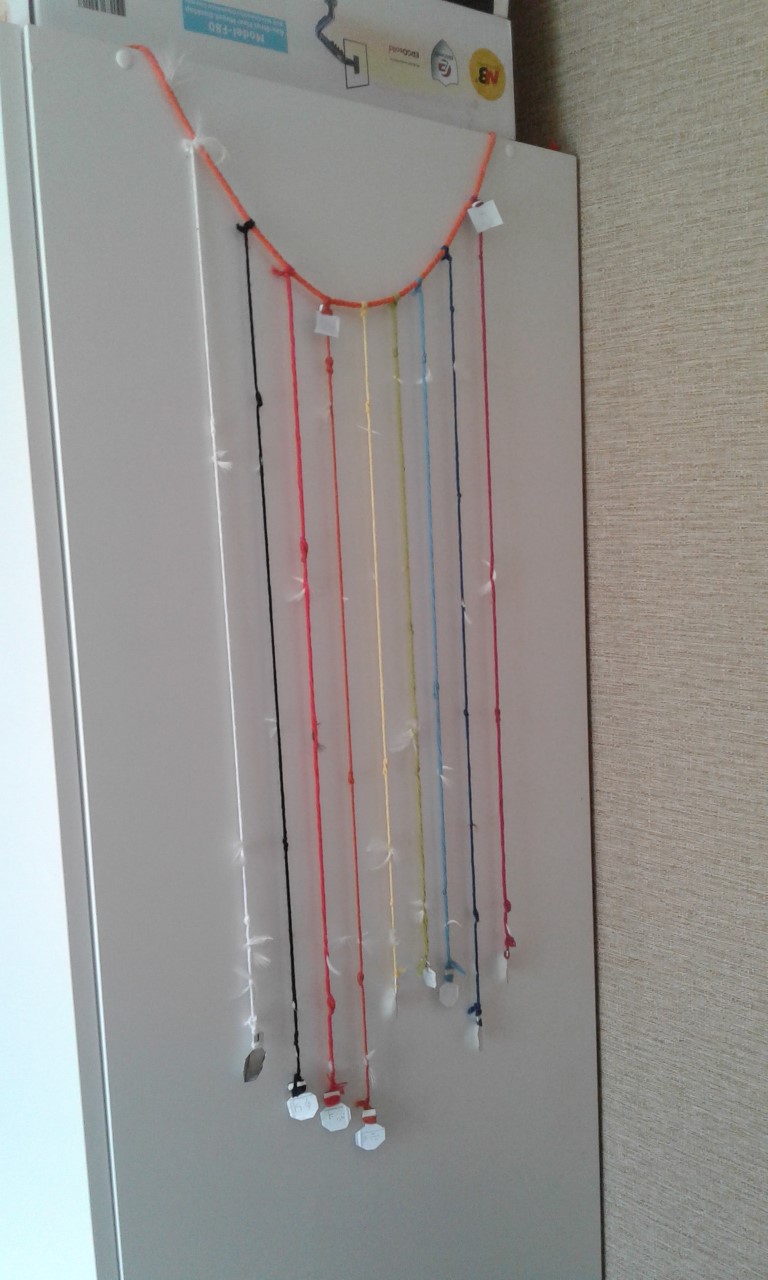The board game of Mochiko and Inkas culture.
http://inka.homedevice.pro:8033/
User: guest@example.com
Pass: Guest123

Model of the game table – Yupana.
https://www.thingiverse.com/thing:5813598
It is public, made by one video blogger and can be freely used for the entry-level game.
Essentially, it is a subtype of an abacus or an analog calculator. Inca children spent about 4 years learning all the intricacies of its use. But basic skills can be acquired in about 1 hour of play.
https://youtu.be/stWvL46J79w?t=1021
Secret of the Incas (1954) in 1080 HD and 16:9 widescreen
In the selected fragment of the film, the main character adds the missing part to the yupana. And only then does he become one step closer to the secret of the Inca civilization.
Recruitment for first year students.
For children from 3 years old.
The set includes 5 stencils, one on each side.
And one instruction on how to make pyramids.
Theory for adults in a book on arithmetic with pyramid multiplication tables.
The Inca game is suitable for children aged 3 to 5 years in a group with a child over 10 years old, who will draw on the stones and lay out the stones in a row on the yupana.
The game can be played by 2 to 9 people (and even more) of different ages, including parents.
We have the following roles:
1 – Ai-Apek, 2,3 – Sea Eagles, 4,5 – Foxes, 6 – Puma, 7 – Jaguar, 8, 9 – Deer
A brief historical background on the mythology of the Mochica culture.
The specific features of the fine art of the Indians of the Northern Coast of Peru in the first half of the 1st millennium (clarity and realism, breadth of subject matter) give us a rare opportunity to study the mythology of the Moche culture. The formation of the Moche culture took place on the basis of the previous ones (Kupisnike, Salinar) at the beginning of our era in the valleys of Moche and Chicama. The state of Chimor (13th? – 15th centuries) became the heir to the Moche civilization to some extent.
The basis of the Moche’s existence was highly developed irrigation agriculture (although the attribution of certain canals and aqueducts to this culture is not always strictly proven). Fishing and sea trade played a major role. Judging by the products of pottery, metalworking, etc., the craft was very highly developed. The absence of a potter’s wheel was compensated by the production of vessels in molds. A painting depicting a textile workshop is well known
[1], in which a total of 14 people are employed (most likely some kind of socially organized production, possibly similar to the “monasteries” where the sacred maidens of the sun among the Incas were engaged in weaving).
Among the monuments of Moche art, the main place belongs to the images on ceramics. The vessels are usually red-brown, much less often black. In many cases, their decoration combined various pictorial techniques (painting and sculpture, painting and relief, relief and sculpture). The painting is usually two-color: the drawing was applied with dark brown paint on a light cream background. Sometimes a third, orange color was added. In terms of execution, frescoes are adjacent to the images on ceramics, the remains of which have been preserved on the walls of monumental complexes in Huaca de la Luna and in Panyamarca. They differ from the paintings on vessels only in their polychromy. There are plot images on metal, wood and other materials.
The first (since the 1930s) to undertake their systematic study was the Peruvian researcher R. Larco Hoyle. He came to the conclusion
[2], that most of the images are associated with an anthropomorphic character with fangs protruding from his mouth and one or two snakes hanging from his belt, to which he gave the name “Ai-Apek”.
The Aleuts and Eskimos have one of the most complex languages on planet Earth. To intimidate their enemies, they inserted their fangs into their upper lips. They did this to intimidate the Chukchi, another tribe of whale hunters who lived on the coast of Siberia in the Chukotka region. Both of these tribes moved quietly along the coast in their kayaks. And in a few years, with luck, the Aleuts or Eskimos could reach South America.
Let’s assume Ai-Apek is a man in a fish skin suit and a hat decorated with a cheetah. The most experienced participant who has successfully completed the game at least 4 times in all main roles is appointed to this role.
Ai-Apek, according to R. Larco Hoyle, fights with “demons”, and all the other characters (zoomorphic) make up his retinue and entourage. The conclusions of the Peruvian scientist were based on knowledge of a huge amount of factual material, but were often obtained without careful analysis, attracting more by the boldness of fantasy than by scientific persuasiveness.
For example, T. A. Joyce, looking at scenes of ceremonial running
[3], in which zoomorphic creatures participate, he assumed that we are talking about people dressed in the costumes of their ancestors.
At the head of the Moche pantheon stood, as has been pointed out, the god of the Moon, who, however, relatively rarely took an active part in events. The most popular figure was the god with snakes at his belt (we retain the name “Ai-Apek”), a cultural hero and the central character of the myths. Sometimes he was accompanied by his son or assistant.
The Fox, along with the Sea Eagle, is a warrior deity. These are graduates or 4-year students. They undergo teaching practice. They are mainly depicted walking with weapons in their hands. Parents are appointed to this role. Their goal is to help the Deer, Jaguar, Puma. And in every possible way to mislead the Sea Eagles (3-year students), with whom Ai-Apek himself will rule. If the foxes fail and the Sea Eagles win, the foxes will have to carry a lap of honor for each Sea Eagle, separately from those who won, surrounded by a retinue on a stretcher (any chair will do as a stretcher)
Sea Eagle (3rd year students or the oldest children). E. Yakovlev showed that when depicting a bird of prey, the Mochika always had in mind the sea eagle
[32]. The eagle participates in various ceremonies, plays an important role in the myth of the rebellion of things. He catches fish together with the second anthropomorphic character with snakes at his belt.
[33] and fights with Ai-Apek
[34] and with Lisa
[35]. Often depicted in an almost purely zoomorphic form.
Puma, Jaguar. Deities – warriors, apparently included in the closest circle of the Moon god. These are 2nd year students. They can already easily handle a thread and volumetric figures. But they are just mastering and looking closely at multidimensional geometry.
Deer. Often depicted without fangs in the mouth. Participates in ceremonies, but does not belong to the entourage of God with Rays. They do not have belts with plaques. These are students of the very first year of study. Usually the youngest children. They are always looked after by Sea Eagles.
The myth of the rebellion of things.

In the legend recorded by Calancha, Vichama and the Sun destroy the first people created by Pachacamac for their misdeeds, but then repent of it. The motif of the gods destroying the first people is widespread in the folklore of various peoples. Usually it is told of a water or fire catastrophe, and with the development of class relations, the cause of it usually becomes the immoral behavior of people. As a rule, one of the people and his family remain alive, and from them comes modern humanity. Among the Quiche Indians of Guatemala
[69] and the Huarochiri in the Andean foothills of the Lima region
[70] This myth took the specific form of a rebellion of domestic animals and living objects and their beating of their owners. A similar version of the myth was also common among the Mochicas, although instead of household items, military clothing and weapons are used in the action. Most often, a club is depicted – apparently, the leader of the rebellious things.
The zoomorphic deities from the entourage of the God with Rays deal with the woman standing next to the pyramid and with the animated objects. In front of the god of the Moon (in the center of the composition), with his hands folded in prayer, sits a man in rich clothes. Apparently, the suppression of the rebellion of things occurs in response to his prayers, and therefore, the supreme deity changed his anger to mercy and people were not completely destroyed.
The Myth of the Warrior Beans.
The cult of beans, or rather, kidney beans, occupied an exceptionally important place in the system of mythical ideas of the Moche. It was determined not so much by the importance of the bean crop in agriculture (the main place, of course, belonged to corn), but, apparently, by traditions dating back to ancient times. Before the appearance of maize in the second half of the 2nd millennium BC, the main domestic plant on the Peruvian coast was indeed beans, so perhaps this cult is connected with some more ancient layer of Moche mythology than the deification of maize. Beans were used by the Moche for some kind of game (possibly gambling) or fortune telling.
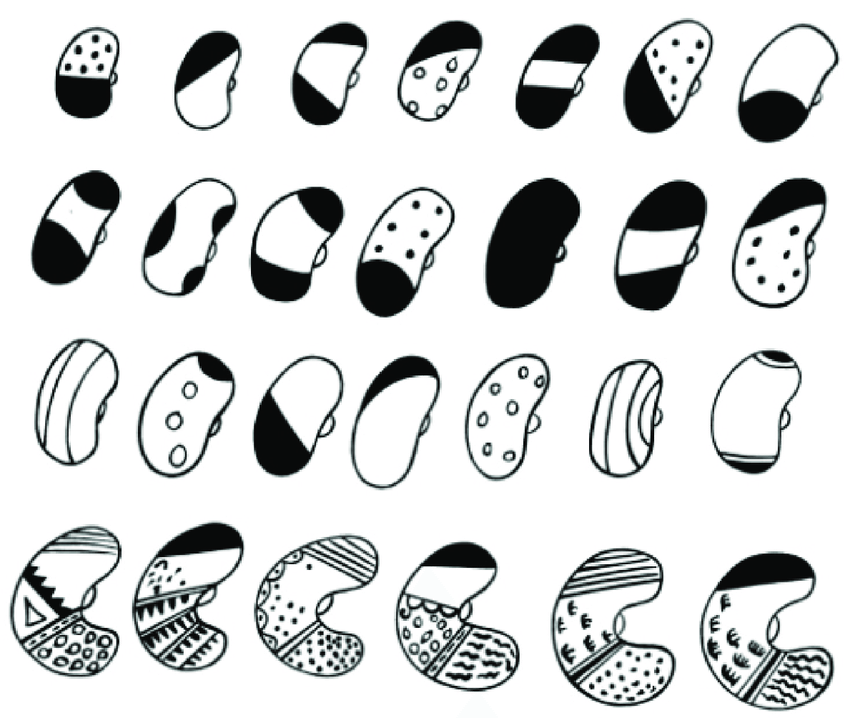
There are about 30 variations of bean coloring, but each individual painting always has only a few, and we never encounter anything resembling an inscription. Beans played some important role in the sacred running ceremony. Anthropomorphized beans are depicted in the headdresses of warriors who walk holding weapons in their hands.
[77]. In one of the paintings, Bob is fighting a Deer.
[78], However, such scenes are very few. Apparently, beans have no relation to the myths concerning the central deities and one must assume the existence of a special legend telling about them.
In addition to the cycle of epic myths, the Moche beliefs certainly included ideas about various local spirits, about supernatural patrons of objects in the surrounding world, as well as elements of magic aimed primarily at increasing the fertility of animals, plants and people. For example, edible plants, similar to the Incas, were animated, and only maize and sweet potatoes were associated with the highest deities
[79] (as has been pointed out, beans occupied a special position). Plant spirits were considered male characters, whereas among the Incas they were women. True, the famous image of a potato is usually commented on as “Potato Mother”
[80]. The only clue here is the type of headdress, which may be considered priestly rather than feminine. If this is not the case, it should be taken into account that the potato was a mountain crop that became fairly well known on the coast only from the time of the Moche.
[81] and the beliefs associated with it may have been adopted along with the product itself. In addition, plant spirits were depicted as fruits with a bird’s head
[82].
Chasqui are the messengers of the Incas.
They ran 5 kilometers uphill at maximum speed. Therefore, a message or a small parcel would reach the other end of the Inca Empire in 5 days.
E. Zeler
[96], and then R . Larco Oile
[97] it has been suggested that the Moche pottery depicted runners-messengers similar to the Inca chasquis
[98]. R. Larke Oyle’s opinion was connected with his hypothesis about bean writing. If the signs on the beans could convey information, then the bean bag should correspond to the whole message.
The main strategic road served by the chasquis led from
Кито to
Куско and further to
Чили. Along this road, posts were set up where the runners taking over the baton stood. The route along the main Inca road – from Quito to Cusco or vice versa – was 2-2.5 thousand kilometers across rocky terrain with a steep slope. Thus, the running speed was about half a thousand kilometers per day (the entire distance was covered in five days).
Conclusion
If the characters of the Moche pantheon still clearly show the features of cultural heroes and almost totemic ancestors, Si (in Chimor), Pachacamac (on the Central Coast), Huiracocha (among the Incas) are real gods, and their cult clearly shows a tendency toward monotheism, which is obviously largely connected with the formation of large despotic states in Peru (Chimor, Tawantinsuyu). Moche mythology, however, apparently corresponds to an earlier stage of social evolution.
LA MYTHOLOGIE DESMOCHICAS (LE PÉROU)
Résumé
Les beaux arts de la culture des Mochicas (le littoral boréal du Pérou, la premiere moitié du Ier millénaire de notre ere) rarissimes par leur réalisme et la multiplicity des themes offrent une possibilité exceptionnelle d’étudier la mythologie d’une société ayant á peine franchi le seuil de la civilisation et ne possédant pas encore d’écriture. Les données iconographiques nous montrent que c’était le Dieu de la Lune qui était une divinité supréme chez les Mochicas. Cependant il ne jouait pas un role important. La place principale appartenait á deux personnages anthropomorphes qui étaient, paraít — ils, freres et rivaux. Dans la littérature, á l’un d’eux on a attribué le nom d’A’i — Apek, l’autre n’était pas jusqu’á présent nommé par les chercheurs. Ces étres sont entourés par des personnages zoomorphes dont chacun était individualisé á un degré différent. Il paraít possible de reconstituer, en traits généraux, l’épopée mythologique des Mochicas, ou les aventures des deux freres divins sur la mer et leur lutte contre les demons marins composaient un épisode central. L’absence d’une déesse protectrice de l’agriculture et le Panthéon archa’íque zoomorphe sont les particularités de la mythologie des Mochicas. Sa structure révele des affinités á celle d’autres tribus des chasseurs et des premiers laboureurs d’Amérique (deux héros chargés d’une mission civilisatrice et les animaux les entourant) mais les fonctions et les roles des personnages sont en conformité aux conditions de l’époque initiale de l’existence d’une société divisée en classes.
De toutes les cérémonies sacrées répandues chez les Mochicas le role principal fut attribué á «la course rituelle» qui était étroitement analogue, selon l’auteur, á la féte d’uarasiko’i chez les Incas (l’admission des jeunes nobles dans la caste supérieure).
Source – “Soviet Archaeology”, No 4, 1972. Publishing house “Science”, Institute of Archeology of the Russian Academy of Sciences, Moscow.
Gameplay instructions.
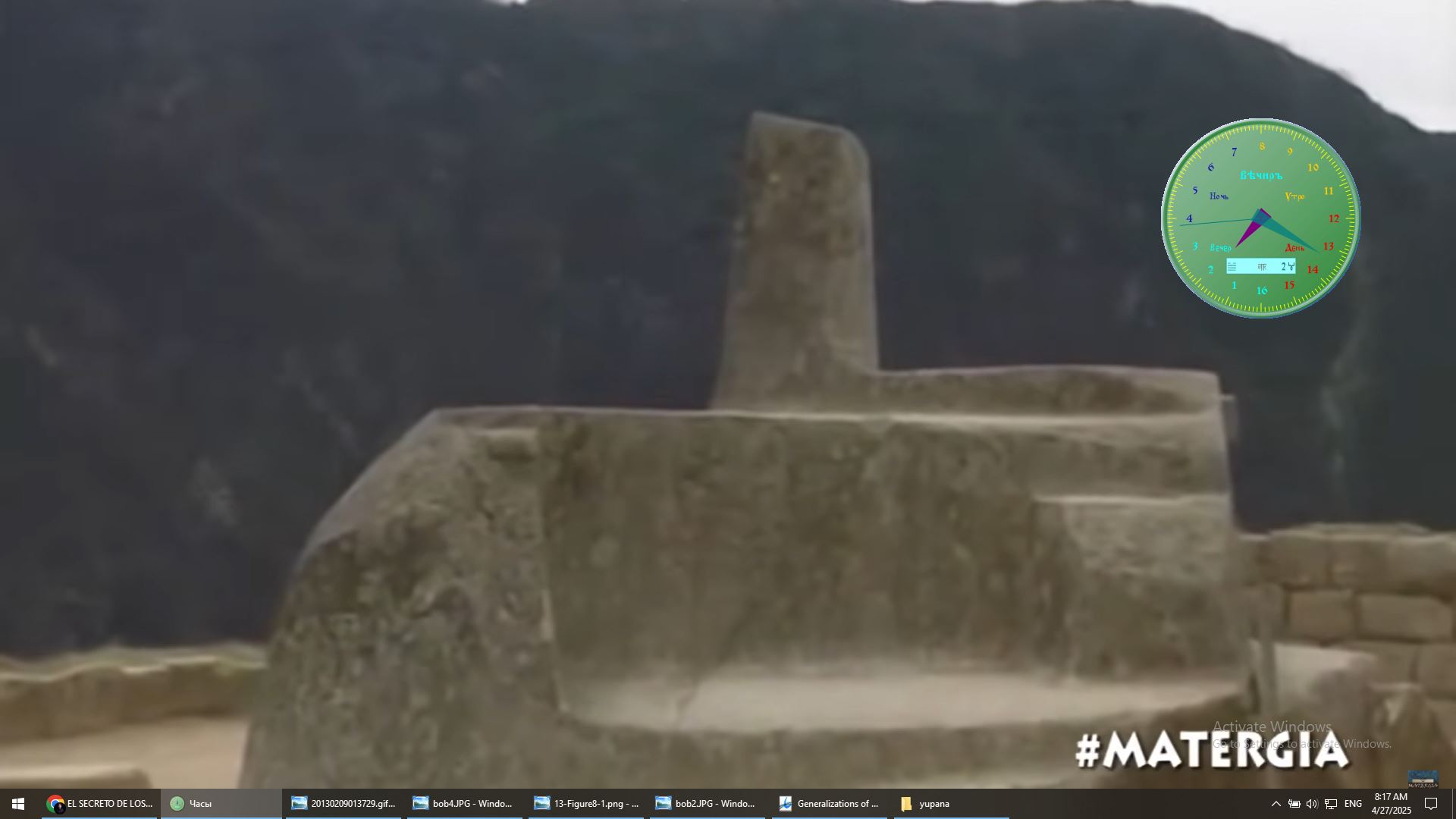
This place is called – huaca (The photo shows the most famous one. It’s basically a platform to place the yupana, to calculate the days on the calendar. But the children were taught this through play.)
There were up to 40 such sites around the perimeter of Cusco. Of these, four are the main ones. The total is up to 270. All of them are related to the lighting, directions to parts of the country, and the calendar of annual works (including the construction season and the season of military operations).
https://es.wikipedia.org/wiki/Huaca
Historical Background: [At a four-year school, students were housed in separate lanes. The youngest were at the top, the oldest at the bottom. The second and fourth lanes (colored purple) symbolize the first and second years of school, respectively. Furthermore, in the second year, students had two points (metal plates) on their belts. First-year students did not have a belt.]
I’m happy with the design, I suggested a small change to make it clear that there is a path between the deformed purple cells.
How the participants are seated.
The participants of the game in Peru were located on 2-3 levels. On the topmost and not very large in area were 1-2 youngest participants in deer masks. They usually either watched other children play once or were invited for the first time.
At the lower level there are 2-4 participants from a pair of Sea Eagles – (3 games or 3 years of training) and Puma and Leopard (2 games or 2 years of training). Sea Eagles help the Deer cope with their tasks, because the Sea Eagles can use the parts that the Deer prepared to create their game artifacts. Basically, these are 3D geometric figures and 3D projections of multidimensional regular figures onto our space. Knowledge of these figures helps the Sea Eagles defeat the Foxes and pass the exam at Ai-Apek himself and get the 4th plaque on the belt (and become a Fox), as well as a valuable prize. If they defeat the Foxes, they get a lap of honor on a portable stretcher. It is especially comical if you need to drag them up a hill.
Ai-Apek watches the game from his separate place and resolves all disputes, if necessary, in accordance with the rules of the game.
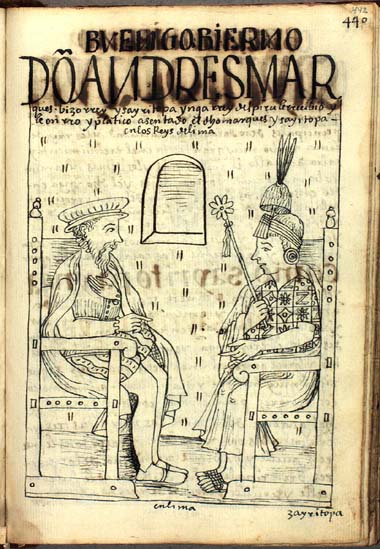
Foxes know the main secret of Yupana perfectly, which concerns the zigzag transition in the center of Yupana, which is connected with the fact that it is possible to imagine in your mind not the entire enormous complexity of a multidimensional regular polygon, but to manipulate not even its projections, but the symbolic representation of vertices, edges and faces, which are represented on the colored beans. Because each multidimensional simplex can be represented by a simple flat polygon with the corresponding number of vertices. Because
Simplex a self-dual figure.
This object was a symbol of the power of the Sapa Inca (the Chief Inca and his Sister). It was usually depicted as a flower.
It was used for decryption
Quipu. The principle of operation is similar to the Enigma encryption machine. All these subtleties are studied in the following levels of the game with Yupana.
The task of the Foxes is to teach the Leopard and the Puma so that they eventually become Sea Eagles and to mislead the Sea Eagles so that they cannot travel on a stretcher at the expense of the Foxes and be admitted to the exam to Ai-Apek. So that the Sea Eagles do not become equal to the Foxes and receive all the privileges of the Foxes.
This tutorial will not cover the skills of weaving from threads and creating complex geometric figures on paper. This will be done in the next series of the game.
The device also cannot be disassembled Tocapu, which is necessary for creating the correct poetic shlokas and encoding the message on the quipu.
On the Yupana there are figures symbolizing Deer, Puma and Leopard and Sea Eagles, each on its own Streets. Children get used to the fact that Yupana is like a model of Cuzco with Streets. Already at this step the transition from objective thinking to symbolic thinking is made. In this case, Yupana is a symbol of Cuzco. And the chain of cells is a symbol of the street.
The essence of the game
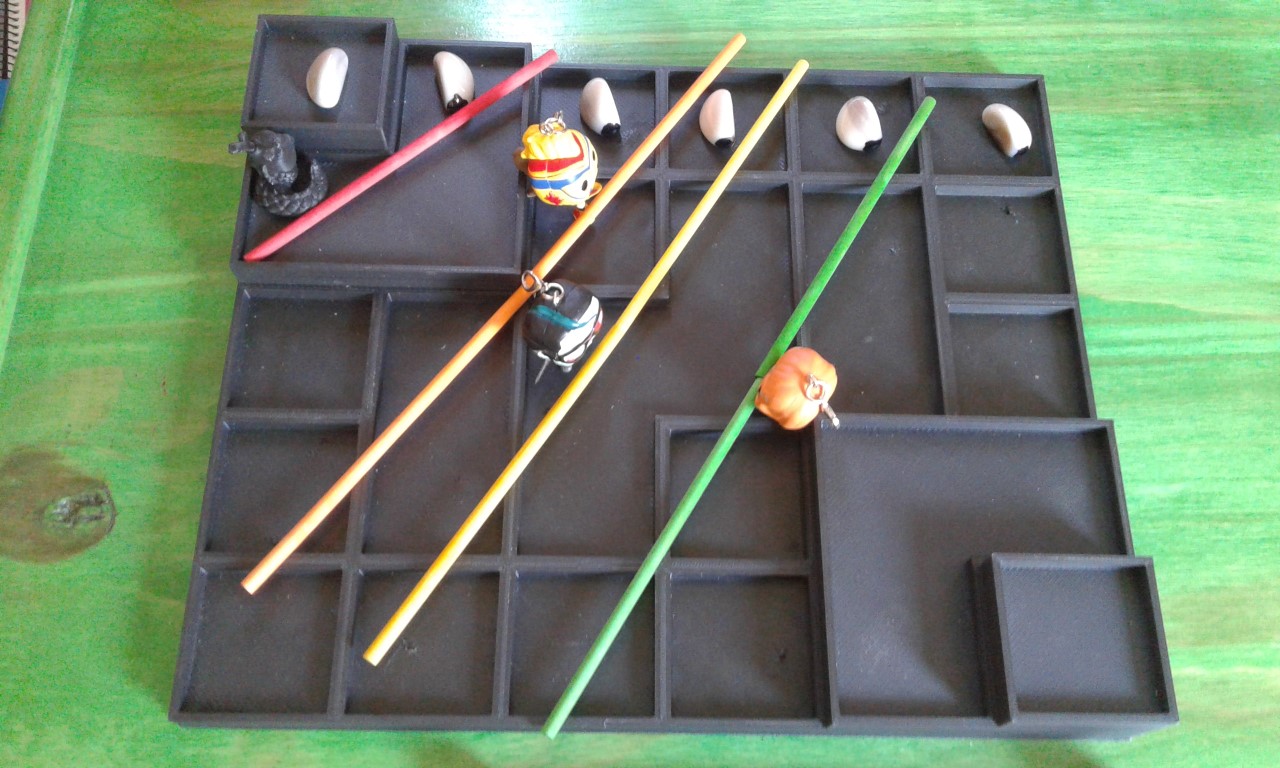
Each cell is for a certain geometric figure. On these streets that are marked with figures and counting sticks, everything is more or less clear. But those streets that rise to the lower hill require abstract thinking and visualization of multidimensional polygons assembled from tubes and threads. This kind of thinking is what this game develops.
Orange figure (on cell 10) on the green street these are Foxes or parents. That is, the coolest experts. Everything below this street (closer to the lower hill of terraces) is already in fact cool mathematics.
Which, however, the children of the Incas and the most specially selected and capable students from distant villages understood.
After graduating from this school-university, they dealt with issues of encryption of messages in the Empire and the organization of databases on quipus in the Sapa Inca Empire, project management and construction control.
As well as mapping and creating models of Inca settlements for the organization of Huacas (sacred places that served as markers for the movement of celestial bodies) and Siphons (systems for delivering water to settlements in the mountains).
The essence of the game is that each group completes all tasks on filling horizontal lines. Working cooperatively as part of their group (younger + older).
If everything is done correctly, then it will be possible to lay out corresponding triangular cards with digital symbols or even samples of polyhedrons and arrangements of beads, tubes, threads and triangles in the cells (so that the Deer, Pumas, Leopards and Sea Eagles remember how to use the yupana). These figures can be made of paper or flat arrangements knitted from threads (There are separate sequels for this – the list is below – “Minigames and sequels”).
And then begins filling the remaining cells with regular polygons, studying their properties and coloring large pebbles in the form of warriors – runners and finding out whose warrior will be the first to reach the top of the opposite hill – in the lower right corner. You need to run there along a serpentine. You need to quickly count in your mind, keeping in your imagination the necessary multidimensional polygon or correctly manipulate the colored bean-pebbles and correctly draw the insignia on the Bob-Runner.
This requires coordinated teamwork of a team of water gods (good) against a team of earth gods (evil).
If the good sea ones block the way to the top at the top – then they have won.
Or the evil earth ones will climb to the top first.
The winner gets the prize – his totem (figurine and corresponding mask – they are in the photo). But the runner of each team stays with its creator. It can be used in the next game.
The goal of the game is to master the very same arithmetic of the 15th-16th centuries.
This is just the first stage. Below in the section – “Minigames and sequels” all other sequels are listed.
Training young deer
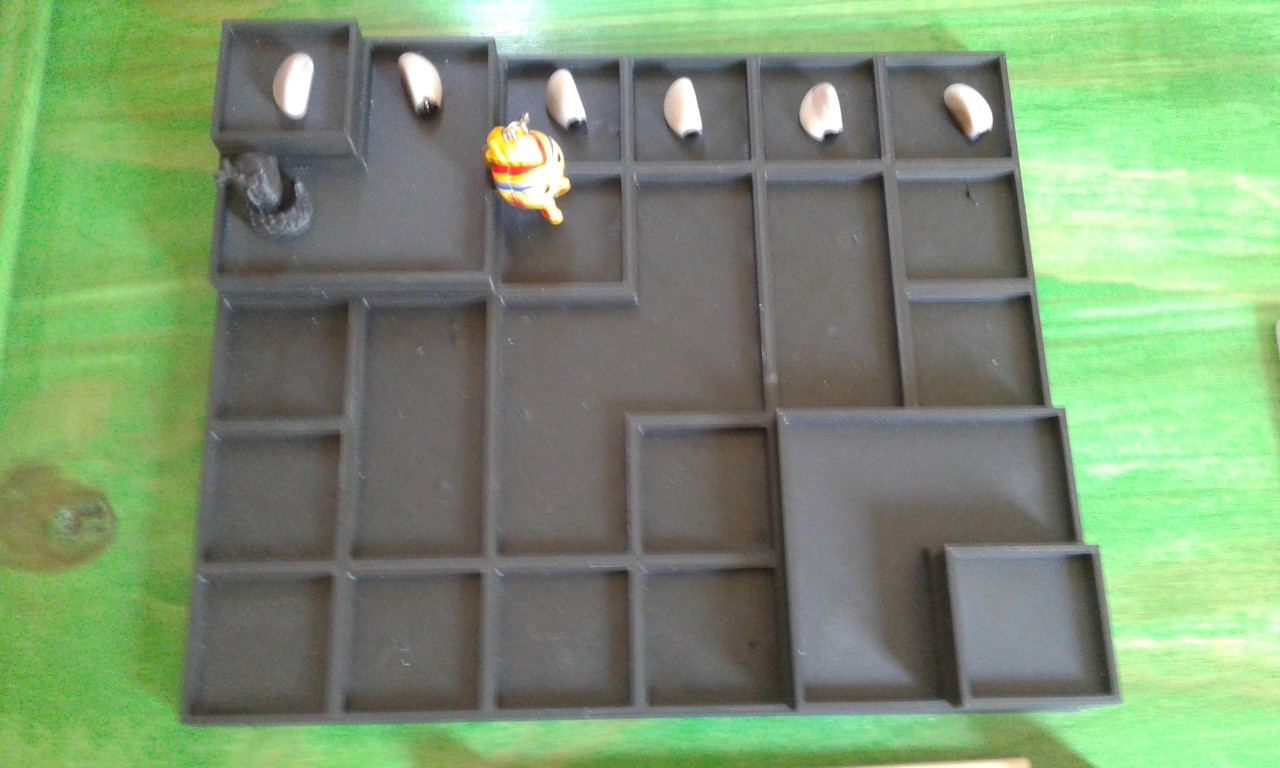
Red street Deer consists of 2 cells (1 – 1) and is located at the very top.
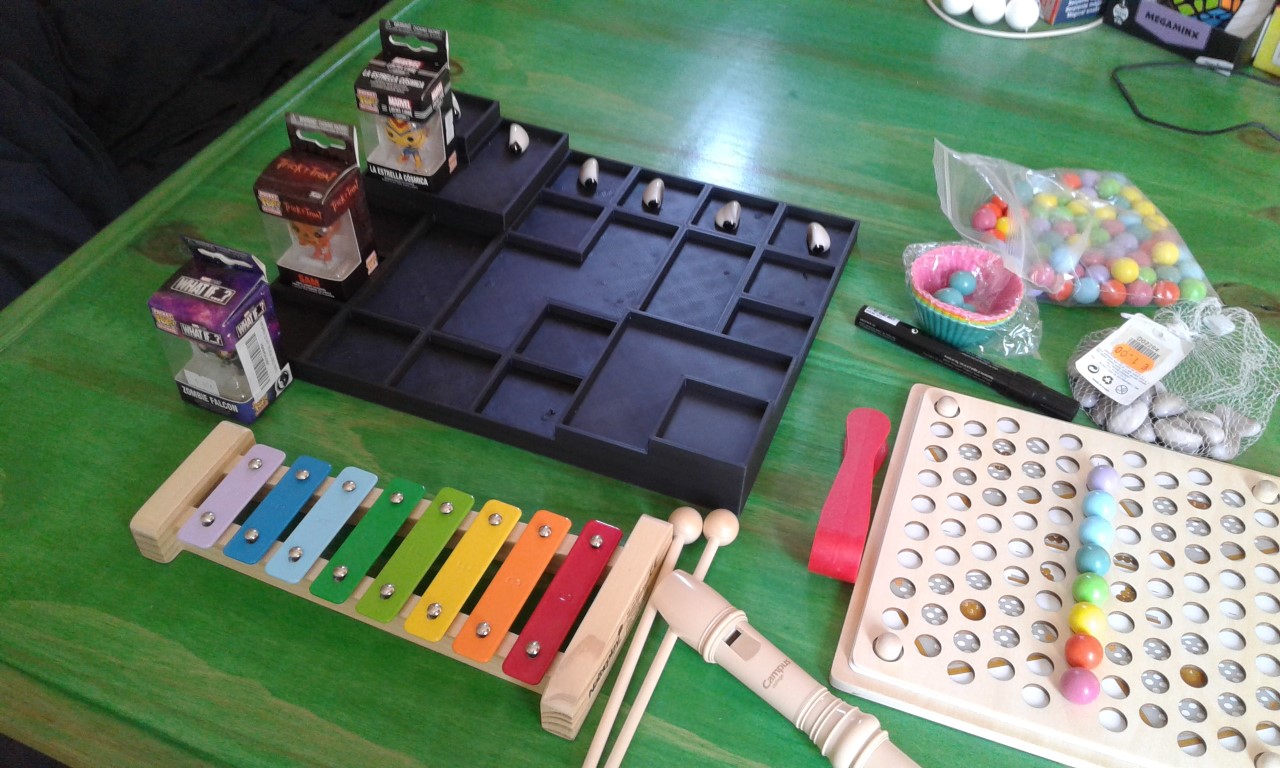
The youngest participant takes one colored ball and places them in a line on the template. The color of each ball must match the color of the note.
We move from the highest note to the lowest. After laying out the next ball, the player hits the corresponding plate in the xylophone three times.
For a more advanced participant, you need to hit 3 plates in sequence, which will result in the desired chord A, B, C, D, E, F ….
A slightly older participant, after each hit on the xialafon, places a stone in the next cell in the first line on the Yupan, painting the top of the stone.
A stone with one painted top represents the concept of a Point.
The Foxes watch the Young Deer’s actions closely and try to explain and control that the Young Deer do everything correctly. If they do everything correctly, they will be able to get two metal plates on their belt at the end of the game and in the next Game they will already be a Leopard or a Puma. And also get the right to paint their Mask and take it home with them.
The deer do not color their mask and cannot take them home.
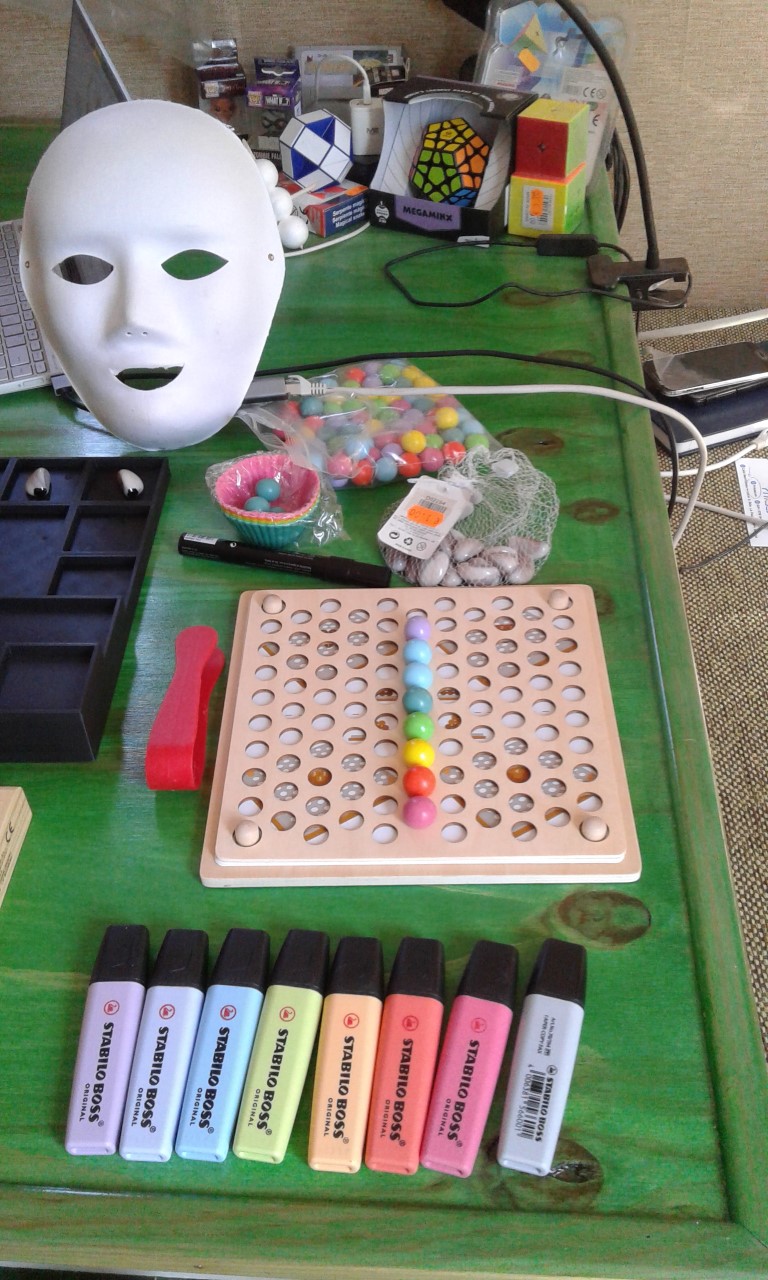
Throughout the game, the Deer pass their colored stones to the Leopard or Puma, and add new ones to the vacant places. If the youngest participant gets tired, he can start playing with dolls or a pipe or watch what the other participants are doing. For example, he can sort colored balls into colored plates to make the work of the Leopard and Puma easier.
The Deer must also invent a coloring for the bean in cell 2, which represents the sum of two beans with one colored tip, which has two colored cusps.
Task for Leopard and Puma
Leopardov and Puma Street orange color and consists of 3 cells (1 – 3 – 1). The cat totem is in cell 3.
The Leopard and Puma can be chosen by participants who already have two plaques on their belt. While the Foxes are training the Deer, the Leopard and Puma can draw as many lines on their mask as there were pebbles laid out by the Deer on the Yupan. If they break this rule and Al-Ayun notices it, they cannot become Sea Eagles in this game and will not receive an additional plaque on their belt. And in the next game, they will not be able to draw lines on their mask until the number of lines on their mask equals the number of pebbles laid out on the Yupan multiplied by the number of plaques they have.
Drawing lines on the mask and discipline is preparation for meaningful coloring of beans in full accordance with the task they perform. And the key to victory, at that moment when you need to think quickly and clearly, when the Foxes will interfere, and they will need to compete with each other in the symbolic race of the Beans to the top of the mountain along the sacred path of the chaska.
Leopard and Puma string beads on a thread and make chains of different lengths 1, 2, 3, 4, 5, 6. Foxes help them. Since Foxes have a totem on the 6th cell, they know exactly how this cell is designated.
How cell 2 is designated – you need to ask the Deer (they had to invent the coloring of the two ends of the bean).
Since the totem sign of the Leopard and Puma is on cell 3, they know for sure that this cell is designated by a bean with 3 colored vertices (they can invent this by analogy with their experience when they were Deer).
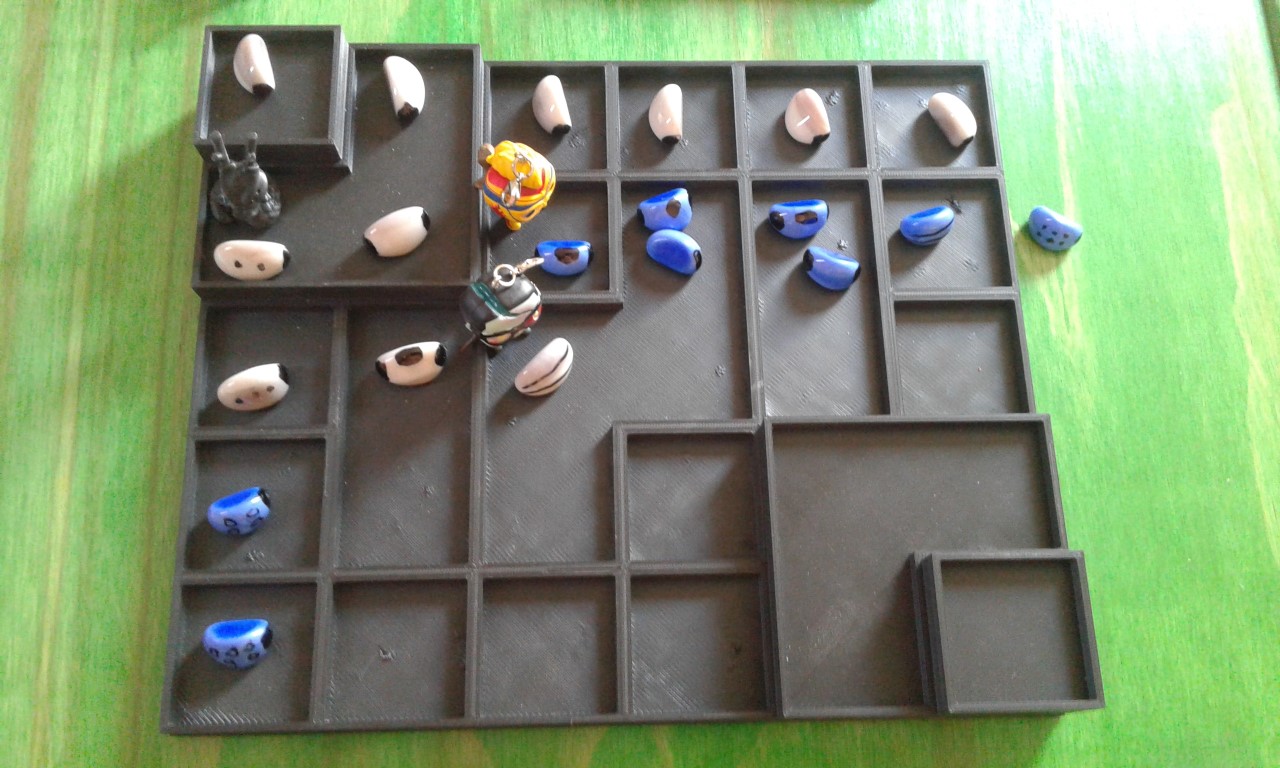
The Leopard and the Puma were very attentive. When they finished making the longest beads ordered by the Sea Eagles, they did not know how to label these beads. There were 6 beads. Exactly as many as the Deer had selected for the Puma and the Leopard. But they all watched the Sea Deer, and as soon as they wove a triad with a side of 3 and drew a Bob-Pebble with two horizontal stripes, the Leopard and the Puma immediately copied the drawing of this pebble on their street.
But then the Sea Eagles ordered even longer Beads from the Deer. The Deer really want to be exactly like the Sea Eagles, so that Ai-Ayun invites them for the exam next year. And gives them prizes and awards and a belt with three plaques.
If Puma and Cheetah are so skillful that they choose the right alternation of beads, then when tying the mat, you will get a mat with some kind of pattern or a butterfly.
This is already a microgame. First, you need to put together a pattern on the sorter. Then weave very thin beads, and then put them together to make a mat with a butterfly pattern. Or any mosaic you want.
Sea Eagles preparing to take the Fox rank exam
The Sea Eagles are located on yellow street of 4 cells (1 – 6 – 5 – 1). The Sea Eagle Totem is on cell 6. This is the most unique cell. There are only 2 cells on the initial size yupana that have a value of 6.
Sea Eagles know that a triad consists of 3 balls stacked on top of each other. If you add another layer to the triad, there will be 6 balls in total. That is why Sea Eagles depict the number 6 with 2 stripes.
You can also consider that each dark stripe is a gap between layers.
And each light strip is a level consisting of a linearly increasing number of balls.
Essentially, the Sea Eagles took the work of the Puma and the Cheetah and put it all into one triangular mat.
They can take the longest string of beads from Puma and Cheetah and tie them together to make one triangular mat.

The Sea Eagles came up with markings for the mats they wove, each new layer they marked with an extra line. After the central square 6 and 10, they began to color only the cap of Bob the Pebble with lines. The Sea Eagles got the sequence 1, 3, 6, 10, 15, 21.
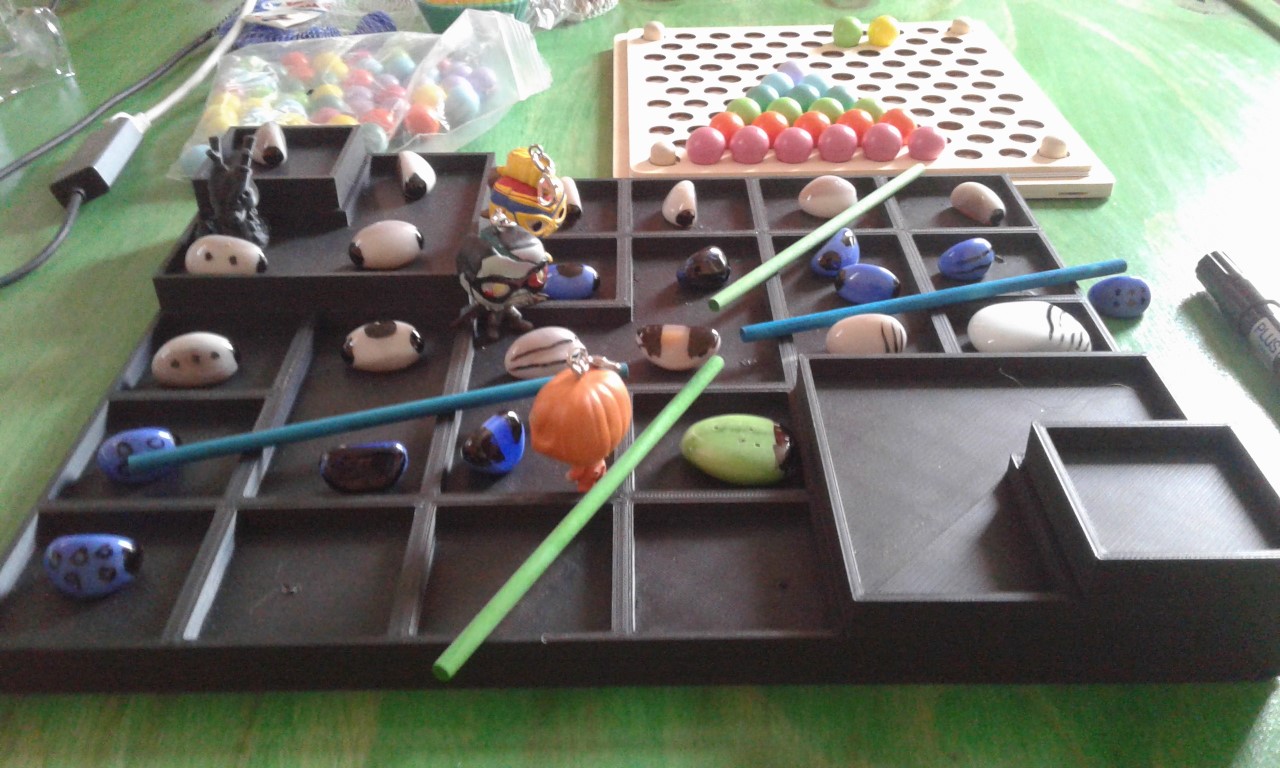
The Foxes do not want the Sea Eagles to become like them, and so the Foxes told the Sea Eagles the most important secret of Yupana. The Foxes discovered that the mat is called a flat triad. And that a flat triad with a side of 4 and a number of balls of 10 is exactly equal in volume to a triangular pyramid with a side of 3 and has the same number of balls, 10, so it is necessary to replace the 3 longitudinal lines (or 4 layers of the mat) with two levels of a 3D pyramid. The air between the balls is indicated by a wide white stripe. The Foxes did all this so that the Sea Eagles, while running to the top of the hill, could not quickly think about what clothes to choose for the Chasca of the Only One (Sapa Inca) and how to paint it.
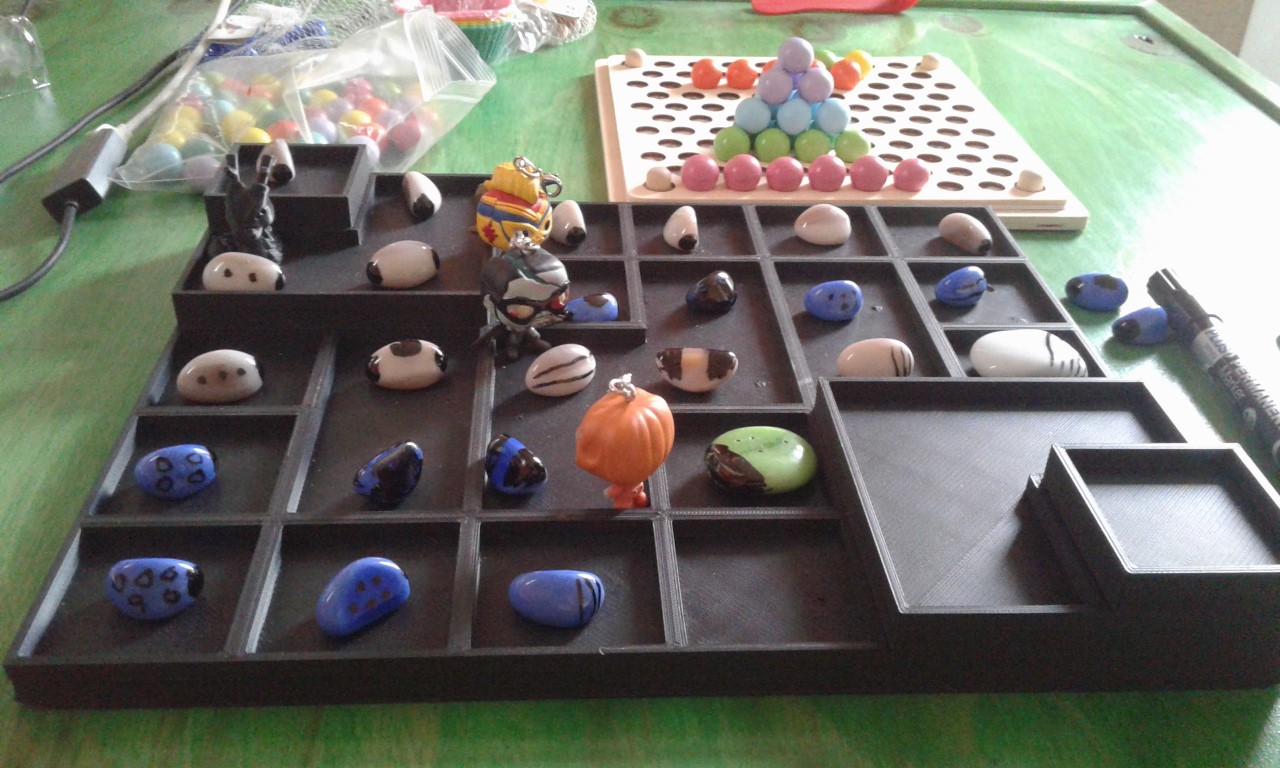
In addition, the Foxes appropriated the designation of the number 15, which was invented by the Sea Eagles, they did this specifically to set up the Sea Eagles, and Ai-Apek strictly asked the Sea Eagles how to designate the stacking of vertices for 4-dimensional space. So that he would force the Sea Eagles to solve the problem about the Bridges and the Sisters’ visit and many other questions. Therefore, the Sea Eagles have practically no chance of becoming Foxes. The only way is to build all the correct polygons from threads and tubes, and then from triangular pyramids and understand all the patterns. Only then will they come one step closer to God and his representative on earth, Ai-Apek.
The Wisdom of the Fox
Have the longest street of 5 green cells. But on the yupana of the given type only 3 cells are presented (1 – 10 – 15). The next unpresented cell has the value 7. This is a polygon with 7 vertices inscribed in a circle. A good Fox should know the geometric construction for dividing a circle into 7 equal arcs (This is the topic of a separate mini-game).
Regular heptagon (sometimes called heptagon)
Regular 6-simplex or heptapetone
The foxes are in their element on the yupana. The foxes know that there is a second cell on the zigzag with a value of 10, through which the dual diagonal of the foxes passes.
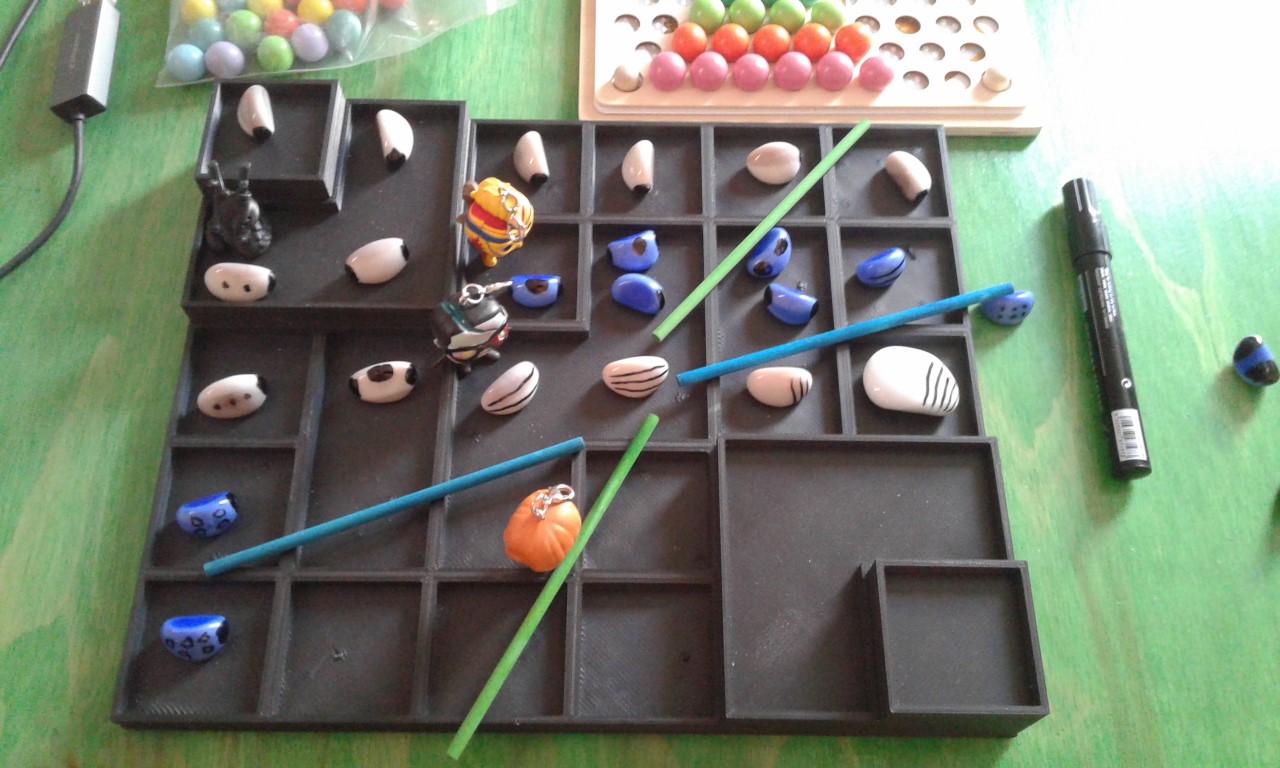
The foxes move to this cell and use the dual diagonal (or street) indicated in the picture in blue.
The Foxes also convince the Cheetah and the Puma to replace the two pebbles on the cage with one black Bob-pebble that represents the number 4.
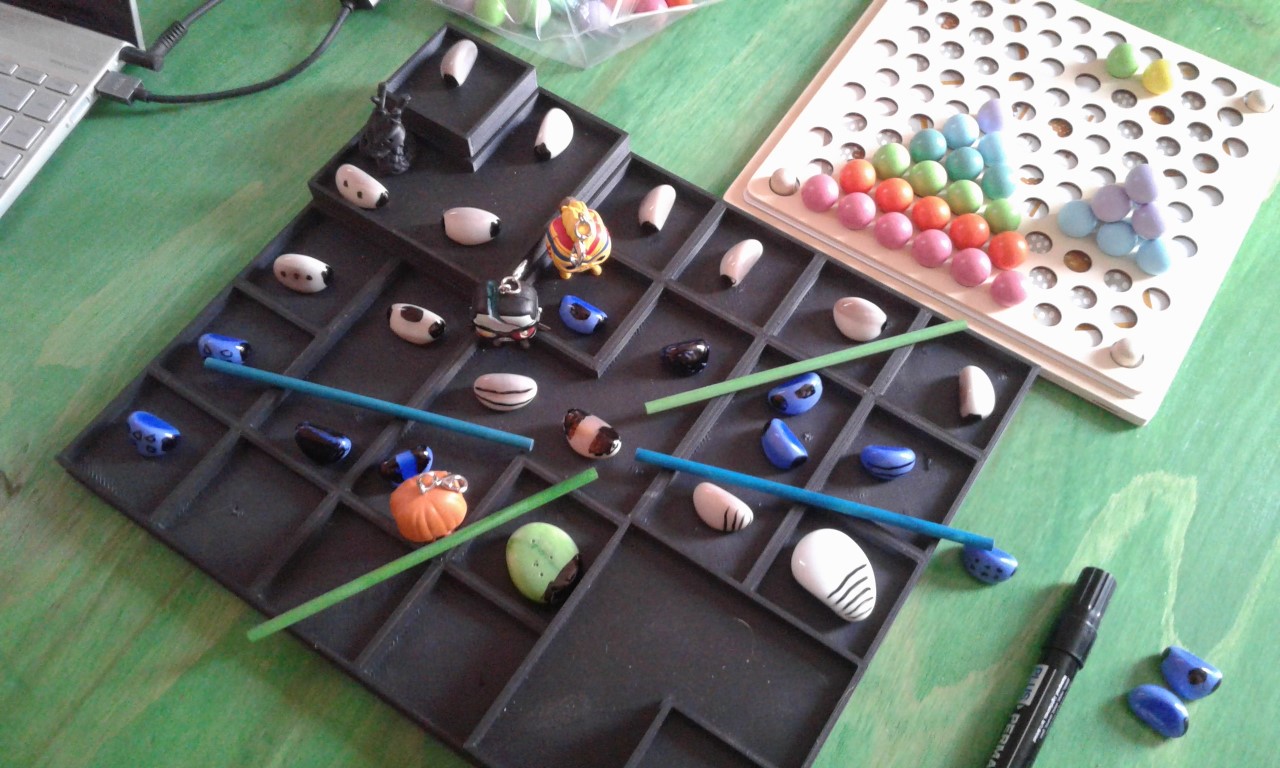
This is the most unfortunate number in Japanese and Korean culture. It is even a symbol of death. That is why Bob is completely black. In addition, it is an indivisible part of the 3D volume of the minimal pyramid.
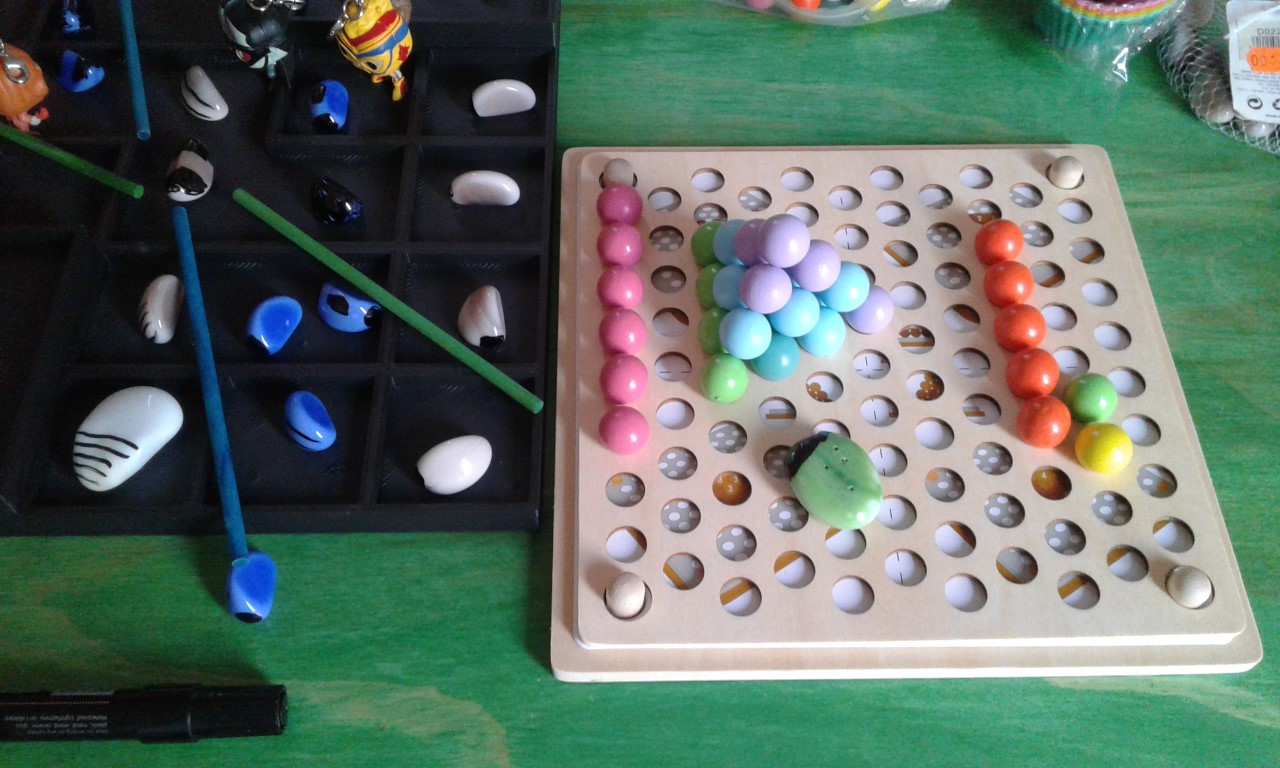
The foxes put the question point-blank about the coloring of Bob the Pebble for cell 20. They built a 3D pyramid at the base of which lies a flat triad with a side of 4 and the number of vertices 10.
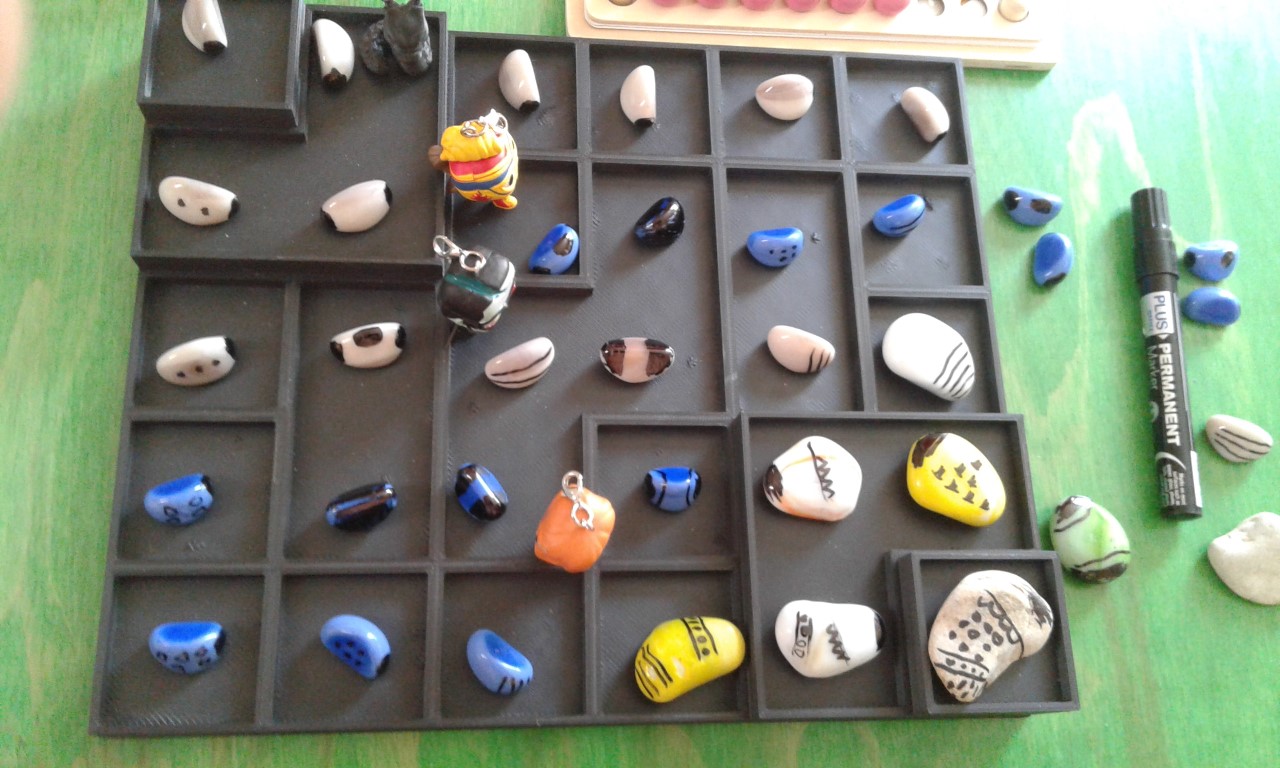
They obviously remembered the correct answer in advance. They also knew that this cell is the sum of two adjacent cells 10, all of them are located on the main diagonal 1, 2, 6, 20, 70. The number 20 consists of 2 pyramids with sides of 3 or one large one with side 4 or one pyramid with side 3 and one flat triad with side 4. Since the pyramids are 2 and they are three-dimensional in 2 layers, they were designated with the help of an additional line under each dark end of the Bob-stone.
Superhuman abilities Ai-Apek
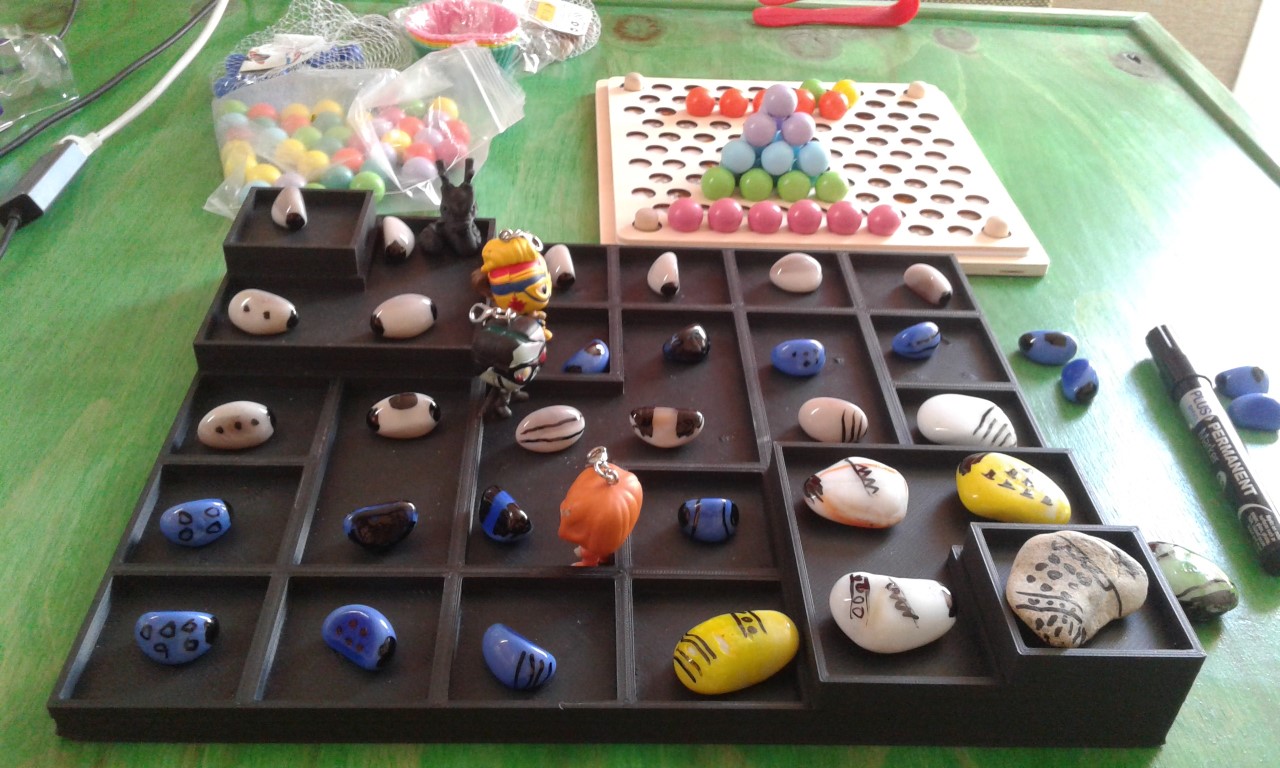
To fill the last horizontal line, you need to have the skill of visualizing 5-dimensional space. The mathematician had such skills Henri Poincaré. In this game, the right to color the final Bob-stone is given to the best Sea Eagle, but only the final result of the coloring is approved by Ai-Apek himself. And only if the Sea Eagle answered all of Ai-Apek’s questions and thus passed the exam for the right to become a Fox.
Modern Mathematical Encyclopedia of Sequences 1, 5, 15, 35, 70, 126
In his hands he holds 12 counting sticks (7*5=35) and a bean painted with a large dot and 6 circles at the end (this is the symbol for 6 – simplex). This was what was used to encrypt the quipu by selecting the necessary tocapu.
The 6-simplex contains 35 faces. And Ai-Ayun explains to the Sea Eagle that in this case we’re not counting the vertices, but the edges of a geometric object. Because all faces can be represented as a plane graph with intersections within a circle with 7 points around the circumference.
Mini Games and Sequels.
The following series include mini tasks or mini games for all ages and interests.
I will list some of the names of the mini games:
6, 12, 30 Bridges or Sisters.
Tokapu (Tomashik Burkina Faso or Quechua or Kilca).
Stellated octahedron.
Icosahedron Poetry Reading Game
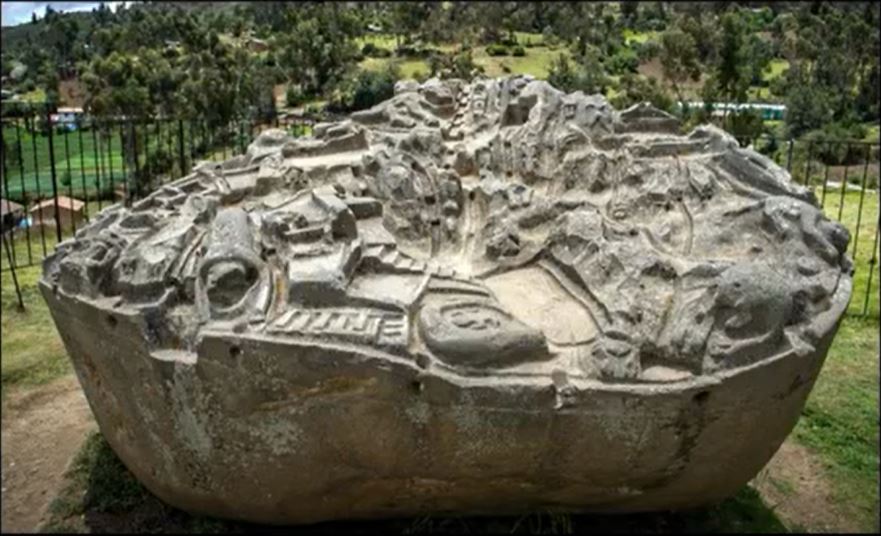

Finding a way through a city (or labyrinth) on the Druid dodecahedron or Ariadne’s Tangle.
Weaving a bracelet with encrypted words.
Computer game – control UFO to travel through a time graph of events.
Temple of the Sun.
And the Temple of the Sun and Moon with robotic mirror control (robot-based drive creation kit).
Puzzle for children aged 12-14 – Decipher the letter of a Jesuit from Peru.
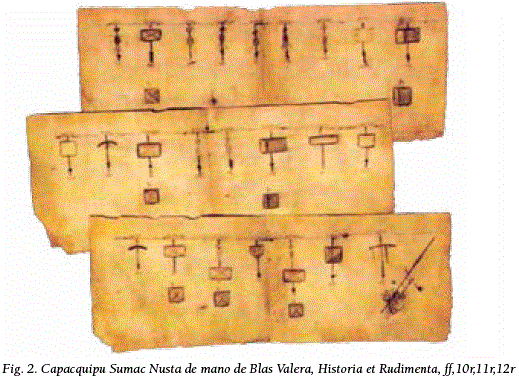
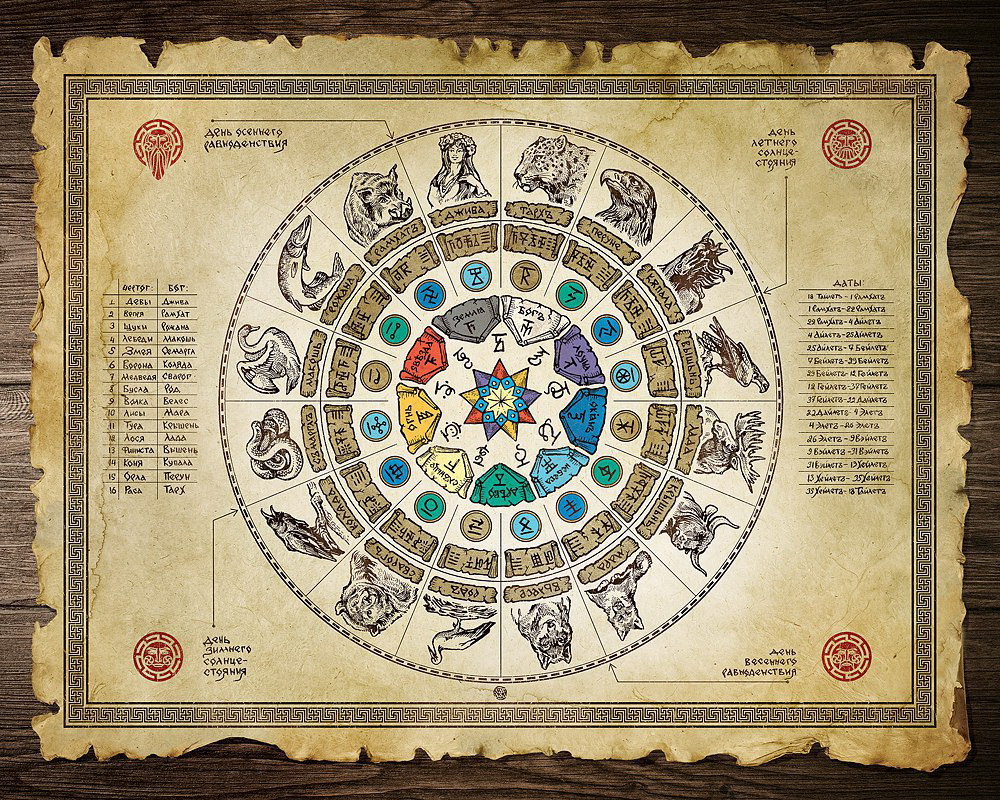
Inca Calendar
Where was Quipukamaik born?
Assistant Quipukamaik’s Warehouse and Chief Builder Fox (The goal of the game is to teach how to make estimates for the construction of structures from brick blocks).
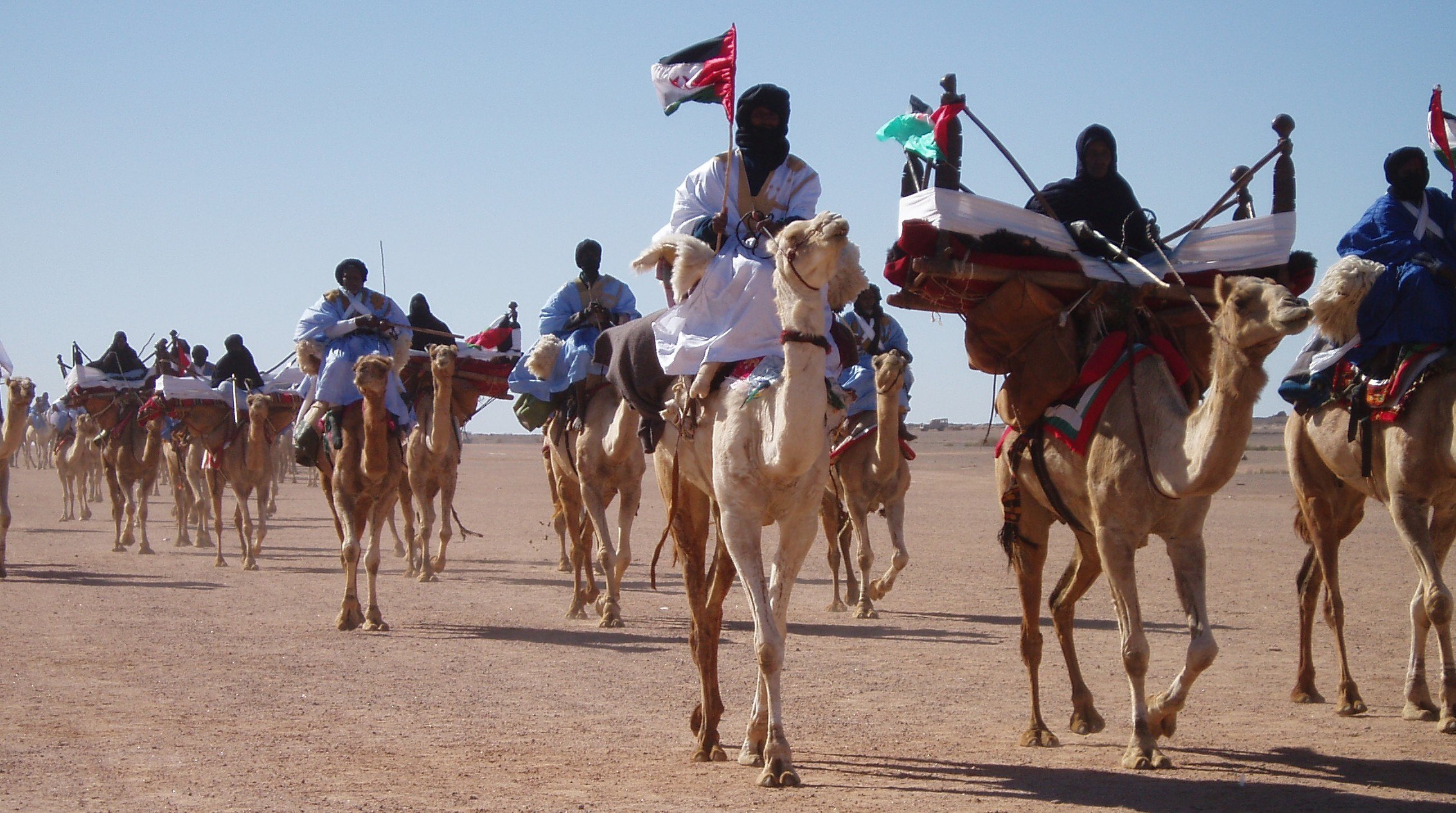
3 Magicians and Druids (Guiding a caravan from the center of the Sahara to the Salt Mines near the Kingdom of Aksum).

Circle of stellar planets.

Farmer’s calendar.
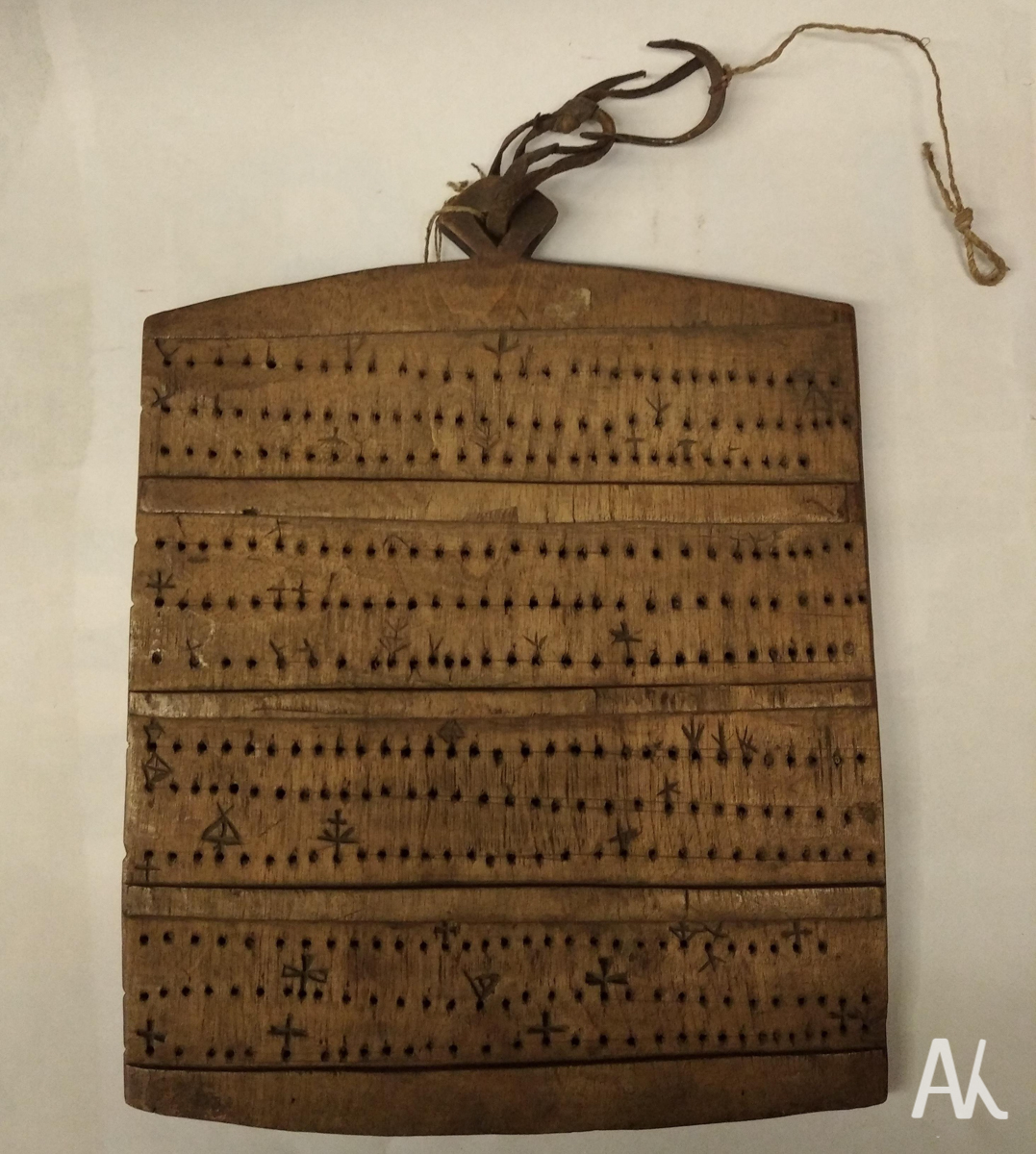

Lace making.
Movement of Planets and Stars.

Computer or console game – Aksum Obelisk and the Dungeons of Babylon.
Maghreb Mosaics (A study of symmetry groups that are important in complex lace-making).
Guamachuco – Huaku placement and city building – computer game based on City Simulator.
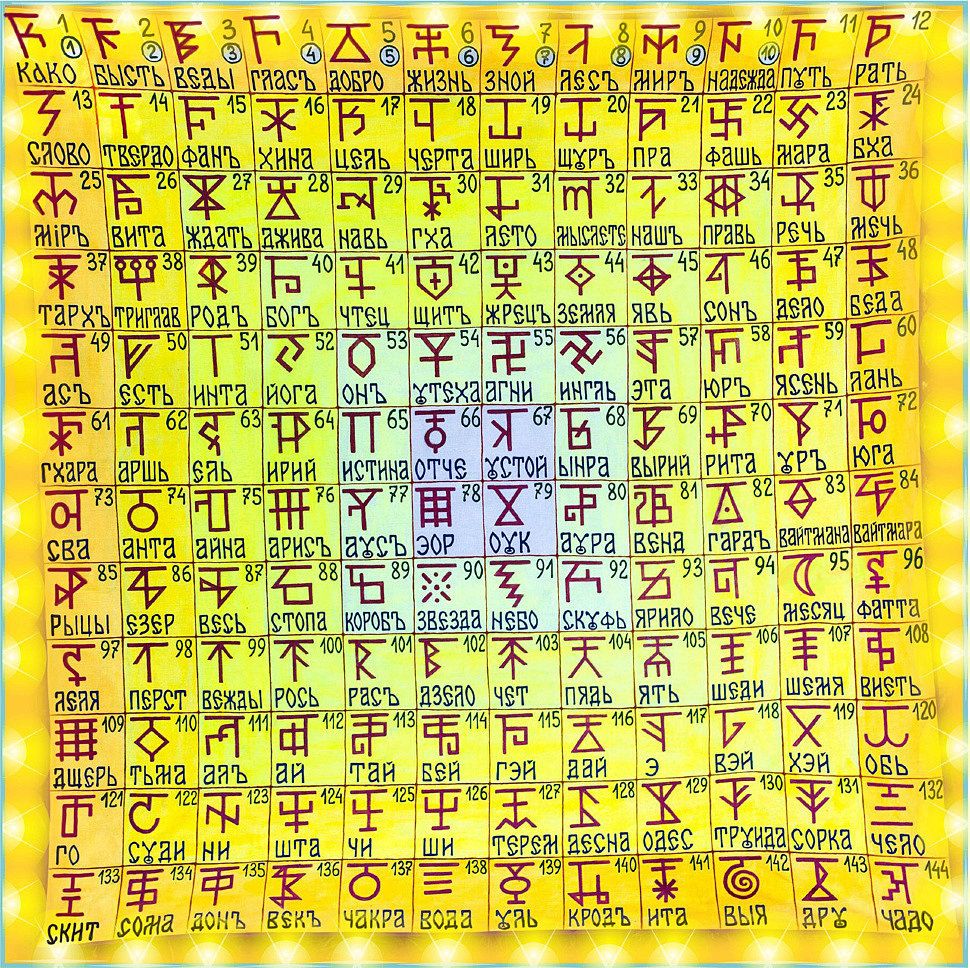
Runes of the Druids and Genghis Khan (Karuna).
Design and construction of the Aqueduct and Siphon (Based on a 3D map of the Inca area).
Talisman (Star Fortress Simulator).

Inca the Sailor or how to reach Cambodia on a balsa log raft and return to Peru.
Sacred Geometry and the Shadow of the Butterfly Wings.
The main secret of Uari is the final game, which can only be completed by completing the training on one or another track in previous games with the corresponding grades in the player’s personal electronic account.
The Secret of Life or Three Goddesses of Fate Moira is a final game for girls, which can only be completed by completing training on one or another track in previous games with the corresponding grades in your personal electronic account.
Lifetime portraits of Ai-Apek
Additions regarding the figure Ai-Apek (1).
A dark mask is worn with wild animal fangs inserted just into the corners of the lips.
Ai-Apek Depicted with a belt of 2 snakes, a flower on his head with 7 petals, a headdress decorated with the skin of a feline animal (presumably a jaguar or smaller), a knife of a characteristic shape is tied to the back of his belt.
In the 15th century, in Dagestan (Tabasaraan region) and Iran, a knife of this shape was used to cut carpets. They may have been exported through the Aksumite kingdom to other countries over a long period of time.
This type of knife is typical of the images of the Moche culture, which preceded the Inca culture.
I also give an example of Tocapu images on each square of the Ai-Apek robe (garment).
In his hands, he holds 12 counting sticks (7*5=35) and a bean painted with a large dot and 6 circles at the end (this is the symbol for 6-simplex). This was used to encode the quipu by selecting the necessary tocapu.

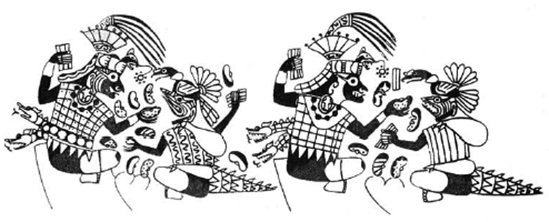
Ai-Apek clothing


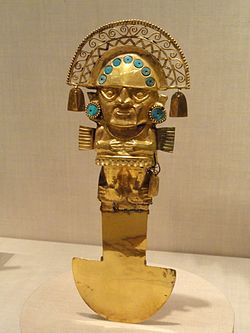
 Foxes know the main secret of Yupana perfectly, which concerns the zigzag transition in the center of Yupana, which is connected with the fact that it is possible to imagine in your mind not the entire enormous complexity of a multidimensional regular polygon, but to manipulate not even its projections, but the symbolic representation of vertices, edges and faces, which are represented on the colored beans. Because each multidimensional simplex can be represented by a simple flat polygon with the corresponding number of vertices. Because Simplex a self-dual figure.
Foxes know the main secret of Yupana perfectly, which concerns the zigzag transition in the center of Yupana, which is connected with the fact that it is possible to imagine in your mind not the entire enormous complexity of a multidimensional regular polygon, but to manipulate not even its projections, but the symbolic representation of vertices, edges and faces, which are represented on the colored beans. Because each multidimensional simplex can be represented by a simple flat polygon with the corresponding number of vertices. Because Simplex a self-dual figure.
